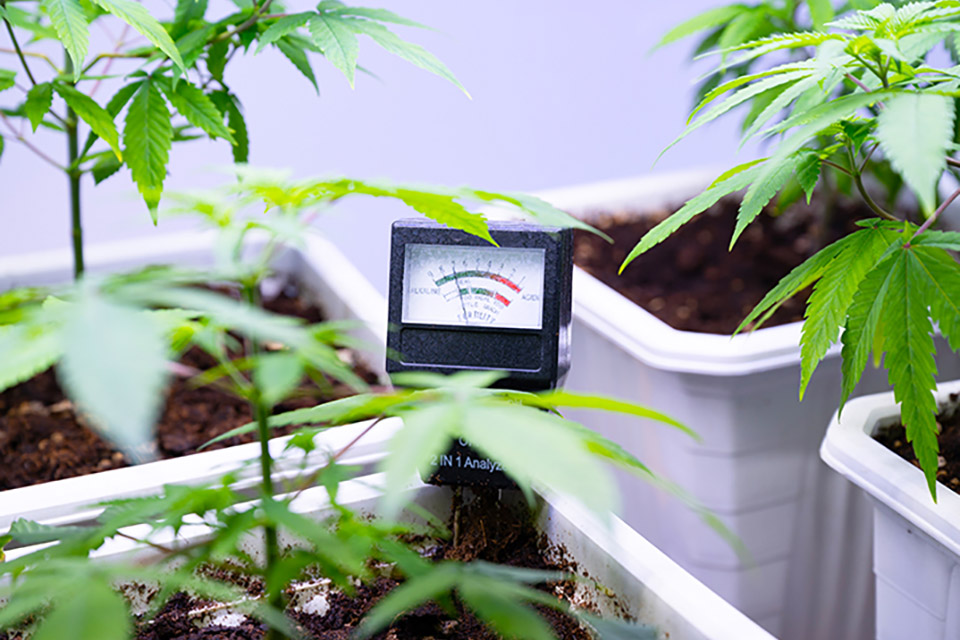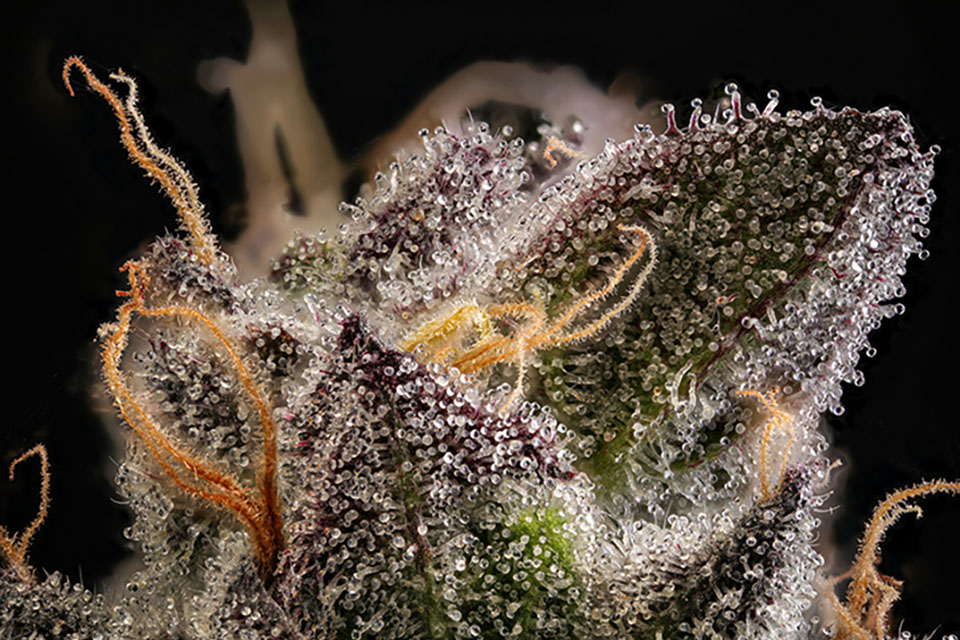
Mutations in cannabis plants are genetic changes that can occur naturally or be induced through selective breeding. While many mutations are neutral or even detrimental to the plant, some can be quite beneficial for cultivators. In this article, we’ll explore what cannabis mutations are, the most common types, their potential advantages and drawbacks, how to identify them, and tips for isolating desirable mutations when breeding new strains.
Understanding Cannabis Mutations
A mutation is an alteration in the DNA sequence of an organism. In plants, mutations can arise during reproduction when errors occur in the copying or shuffling of DNA, or from environmental factors like radiation, chemicals, viruses, and errors in DNA repair. Mutations can affect anything from a single gene to an entire chromosome.
For cannabis growers and breeders, mutations are significant because they introduce genetic variation and novelty. While many mutations are neutral or harmful, some can give the plant useful new properties like:
- Higher cannabinoid (THC, CBD) production
- Unique terpene profiles
- Increased pest/disease resistance
- Higher yields or faster growth
- Improved flavors, colors, or aromas
However, undesirable mutations may lead to:
- Stunted growth
- Susceptibility to pests and diseases
- Nutrient deficiencies
- Lower potency and poor flavor/aroma
So mutations are a mixed bag, but the good ones provide ample opportunities for creating exciting new strains.
Common Types of Cannabis Mutations
Mutations in cannabis can affect the plant in various ways. Here are details on some of the most notable mutations that may appear:
Variegation
Variegated cannabis exhibits leaves with multiple colors due to a lack of chlorophyll production. This striking mutation can create leaves that are yellow, white, pink, red, or purple against the normal green. These color patterns result from changes in chloroplast DNA that disrupt the biosynthesis of chlorophyll. Without enough chlorophyll, the leaves cannot properly photosynthesize. Severe variegation can significantly reduce plant vigor and yields. The mutation may also destabilize genetics, causing variegation patterns and intensity to fade out or disappear in later generations. However, mildly variegated cannabis can survive and add unique visual appeal.
Fasciation
Fasciation causes stem tissue to flatten and grow in a banded or ribbon-like pattern instead of round. This mutation arises from hormonal imbalances during cell division and growth. The effect may increase the number of cola sites along the stem, allowing more flower clusters to develop for potentially higher yields. However, the spindly, flattened stems can easily split open or break under the weight of heavy buds. Proper staking and support is required to prevent damage. Fasciated stems also tend to be more vulnerable to environmental stresses and pests.
Cauliflower Bud Formation
While most cannabis buds have a classic conical shape, the cauliflower mutation causes extremely dense, spherical flower clusters reminiscent of cauliflowers. This striking mutation results from abnormal hormonal signals during flower development. Cauliflower buds tend to be heavier, so this trait can boost yields. However, the dense bud structure also creates a moist microclimate within. This increases the risks of mold and bud rot. Careful air circulation and humidity control are needed for these exotic blooms.
Twinning/Branching
Twinning refers to additional stems emerging from the same nodes rather than just one. Instead of a single central cola, plants develop two or even three main colas. Twinning arises from hormonal changes influencing cell division and shoot growth. If not properly managed, crowded branches may require removal or separation. But if allowed to properly mature, twinned stems can translate into higher overall yields. This mutation must be carefully stabilized though, as multi-branching often leads to intersexual traits.
Duckfoot Leaves
This highly distinctive mutation causes cannabis leaves to become webbed or deeply serrated like the feet of ducks. The mutation alters the regulation of leaflet separation and cell growth. While duckfoot offers excellent camouflage for guerrilla growing, it may require stabilization to reliably express the trait. Too much webbing can also reduce photosynthetic efficiency. Milder duckfoot mutations tend to balance uniqueness and vigor best.
Foxtailing
Instead of rounded, tapered buds, foxtailing causes elongated, pointy calyx formations resembling fox tails. This mutation is typically triggered by light or heat stress during flowering, causing changes in hormonal signals and internode elongation. While visually striking, foxtailing doesn’t enhance potency. Stressed plants may also produce airy, seedy buds. Ideal conditions are required to maximize density. The mutation can be desirable if stabilized in genetics though.
Thickened Stems/Stalks
Mutations influencing stem cell growth may result in noticeably thicker stalks. This provides stronger structural support for heavy flowering and reduces risk of toppling over. But stalk width alone doesn’t necessarily equate to sturdiness if the core remains hollow and weak. Truly solid, woody stems are more resilient. Stabilizing stem density mutations without sacrificing pliability also helps prevent cracking.
Accelerated Flowering
Early onset of flowering concludes the lifecycle faster, allowing harvesting sooner. This mutation involves changes to receptors perceiving daylength and hormonal signals inducing flower initiation. However, condensed cycles can shrink yields and terpene content compared to fuller flowering periods. Rapid flowering must balance vigor and potency.
Delayed Senescence
Later fading and dying off of leaves and pistils extends the maturation window. Slower maturation may increase terpene and cannabinoid production. But protracted ripening can also degrade THC as it ages and oxidizes. Prolonged yellowing may also trap moisture and invite mold. Timing harvest optimally with finishing mutations can be challenging.
Benefits and Drawbacks of Cannabis Mutations
While enticing, mutations pose some advantages and disadvantages:
Potential benefits:
- Higher cannabinoid content for greater potency
- Unique terpene profiles and flavors
- Increased pest/disease resistance
- Improved environmental stress tolerance
- Stealthier appearance (duckfoot leaves, etc.)
- Higher yields (twining, cauliflower buds, etc.)
- Distinctive aesthetic appeal
Potential drawbacks:
- Genetic instability – mutation may not breed true
- Detrimental changes in growth or structure
- Greater tendency to hermaphroditism
- Reduced vigor, health, productivity
- Lower potency or terpene content
- Poor flavor
- Susceptibility to mold, pests, disease
So as tempting as mutations may seem, unstable genetics can disappoint if not carefully selected and stabilized. Unique traits don’t always translate to better performance.
Identifying Cannabis Mutations
Many mutations become apparent visually at various growth stages:
- Seedlings – Multiple embryos, taproots, or cotyledons
- Vegetative stage – Unusual leaf shapes, variegation, twinning
- Flowering – Fasciated stems, cauliflower buds, foxtailing
However, genetic testing is needed to accurately determine if specific changes are true mutations versus normal phenotypic variation. Analyzing seedlings or clones from a suspected mutant for markers linked to key traits can confirm if a mutation is present. This helps breeders select which plants to continue working with.
Isolating Mutations for Breeding
Once promising mutations are identified, breeders have ways to preserve and propagate these traits:
- Cloning – Taking cuttings to produce genetically identical clones of the mutant plant.
- Crossbreeding – Crossing the mutated plant with other strains passes on the mutation to some offspring which can then be selectively bred.
- Backcrossing – Breeding a mutant plant back to its parent strain over multiple generations concentrates the mutation while preserving more of the original genetics.
- Selfing – Breeding the mutant with itself through self-pollination also intensifies the expression of the mutation.
Careful record-keeping and testing are vital throughout this process to ensure the mutations carry forward reliably. Isolating a single mutation takes generations of stabilization before arriving at a true-breeding line. Patience and diligence are key.
Make Your Cannabis Garden a Mutant Paradise with Kind Seed Co
While cannabis mutations occur randomly, they provide the genetic diversity for new and intriguing strains. Some mutations like variegation may lack utility beyond visual appeal. But others like higher cannabinoid levels or pest/disease resistance can offer real advantages, leading to more potent, vigorous plants.
Isolating these rare but beneficial traits takes an expert eye and years of selective breeding. But the results can be groundbreaking new strains. By understanding the different cannabis mutations and how they’re passed on, cultivators can guide this evolution and botanical diversity.
At Kind Seed Co, we offer one of the largest cannabis seed banks in the USA for home growers. While we can’t promise mutations, our diverse catalog allows you to explore the genetic range and potential of cannabis. Let us help you grow your perfect strains, whether you’re looking for high yield, potency, or just a gorgeous garden specimen. Contact us today to get started.



